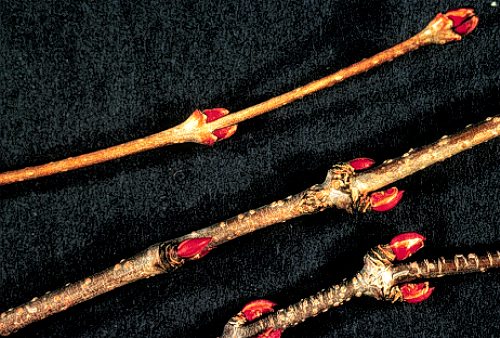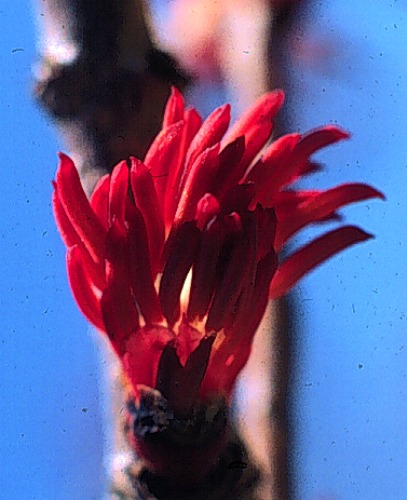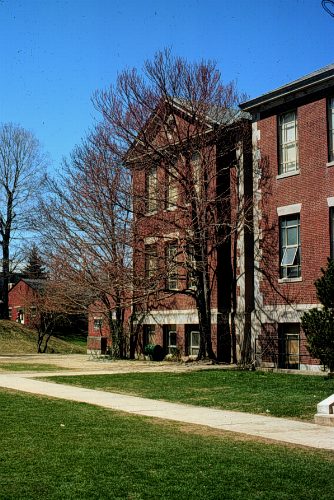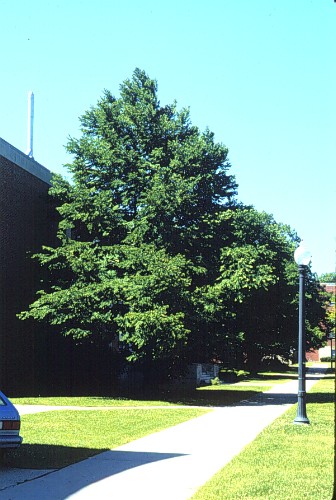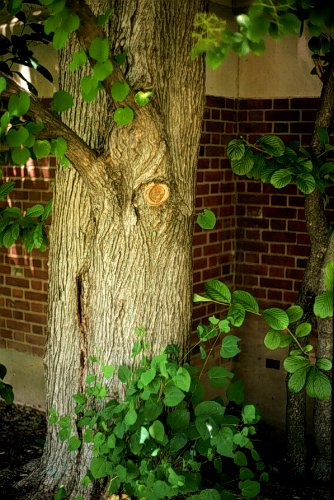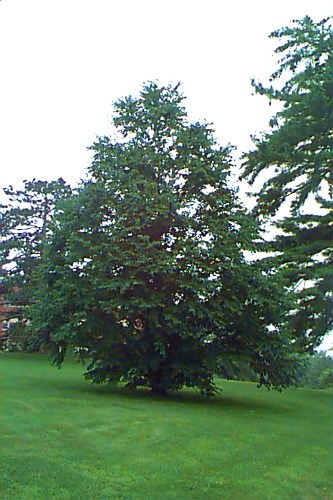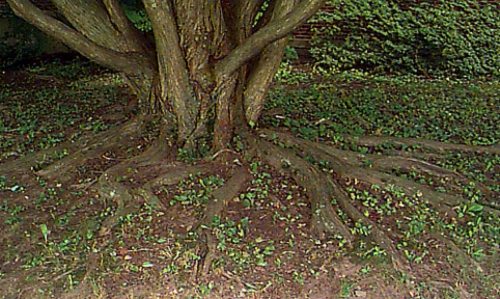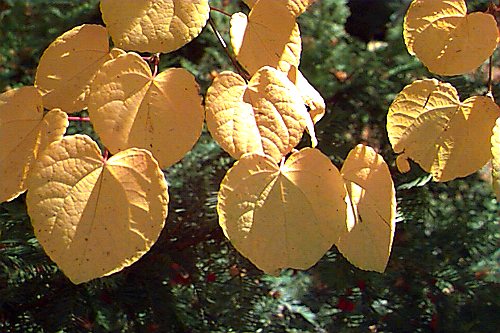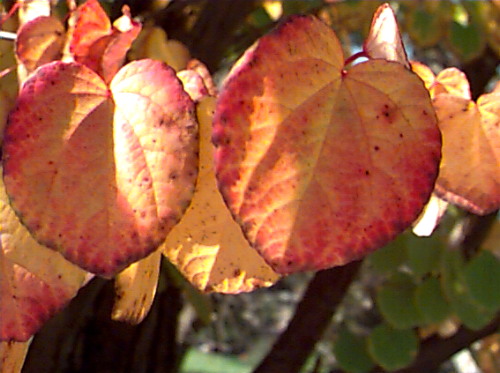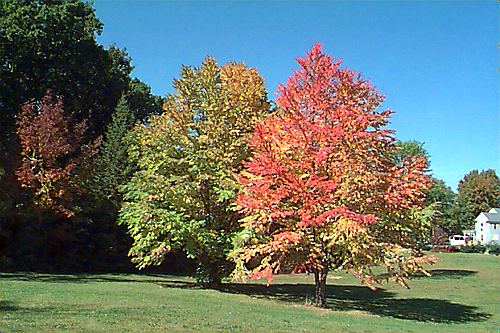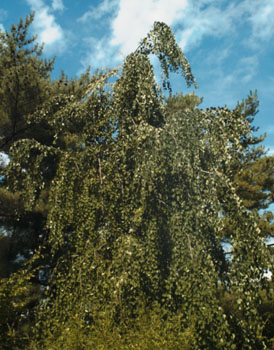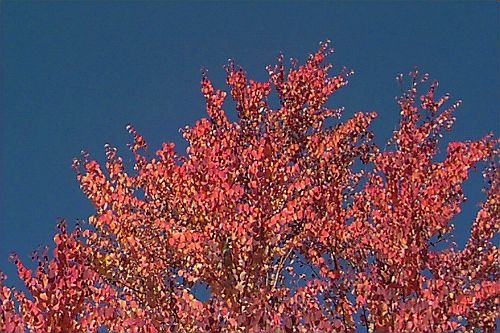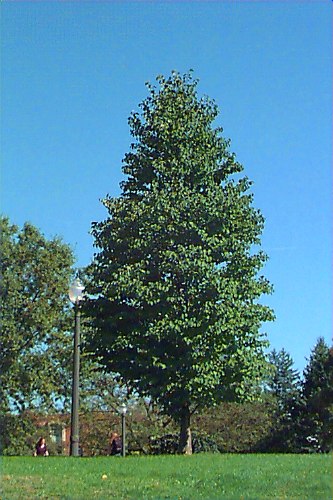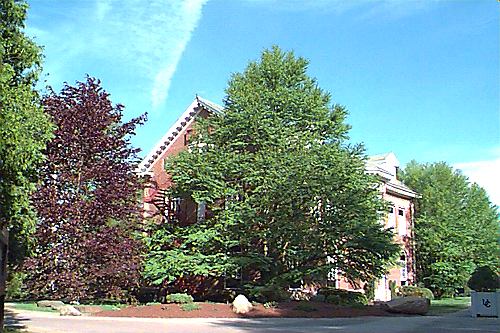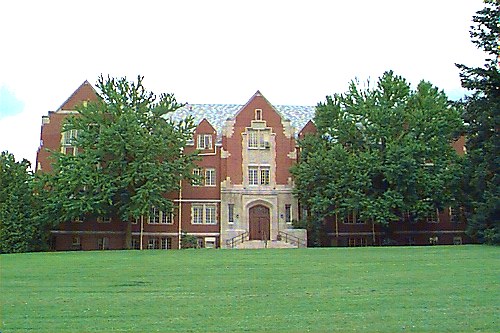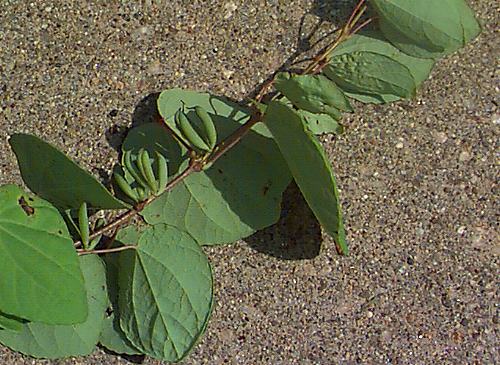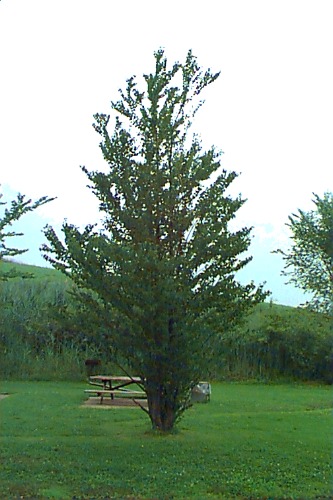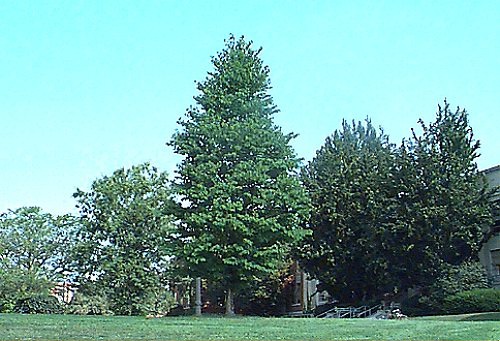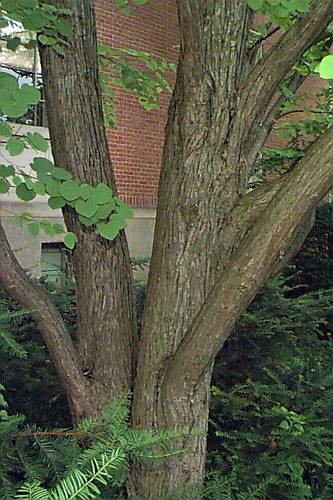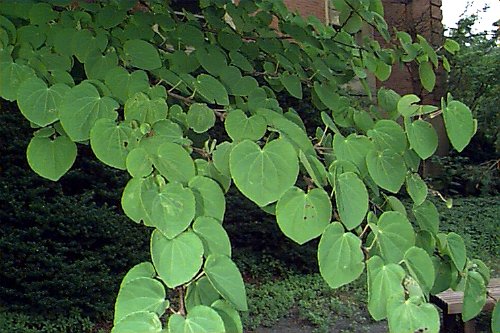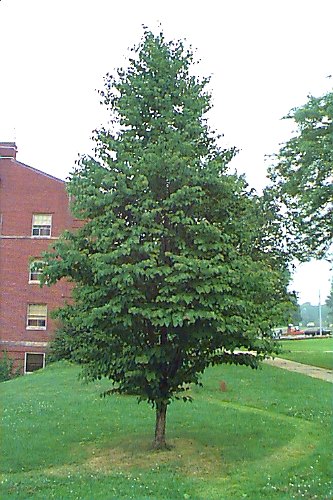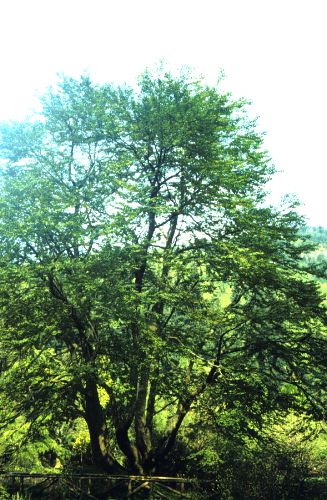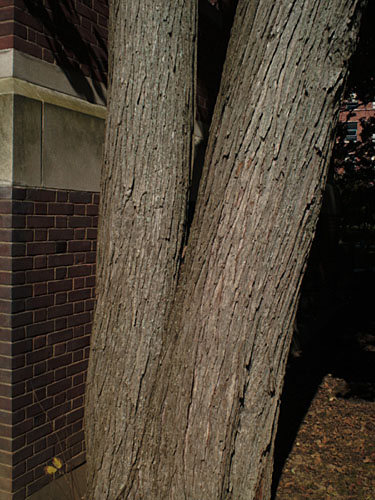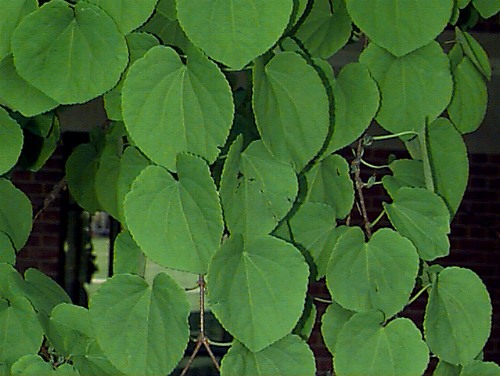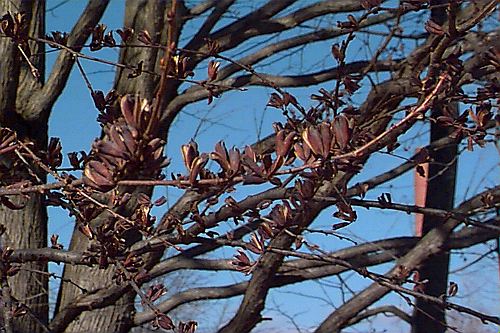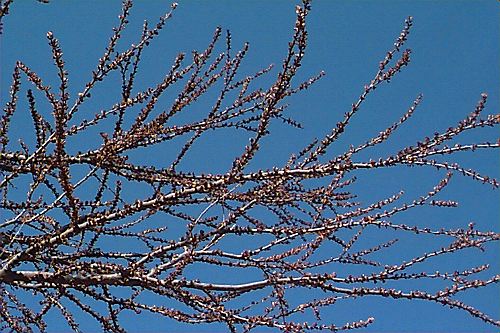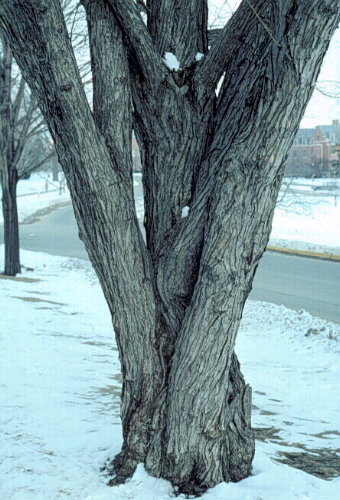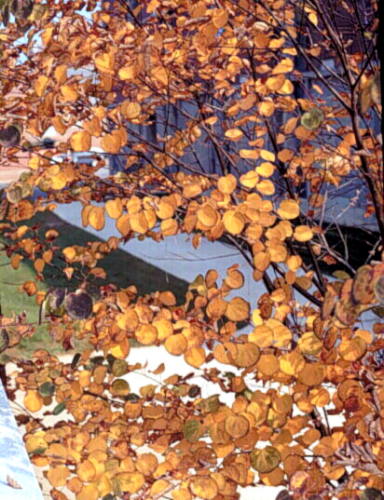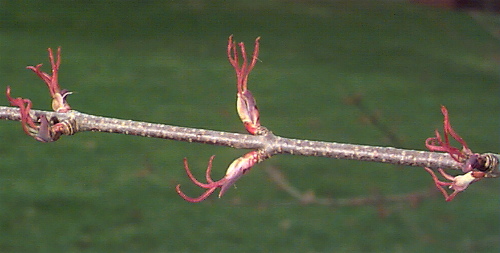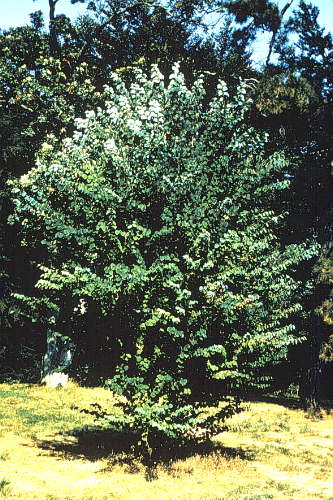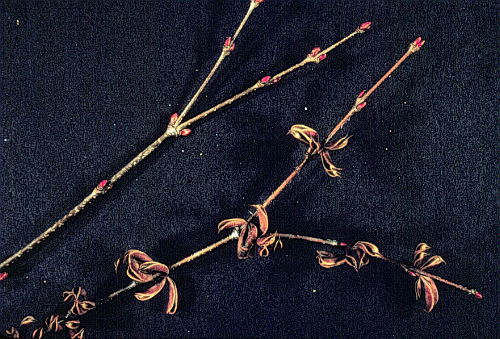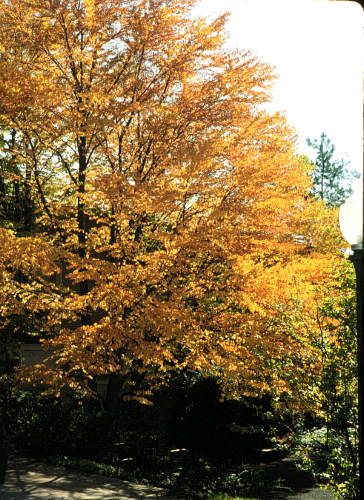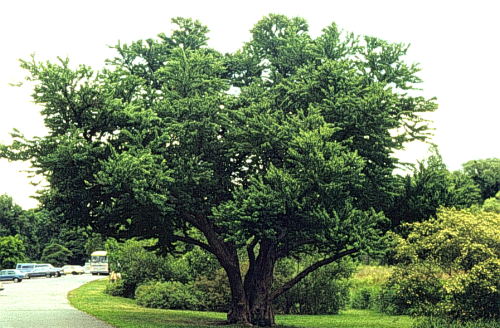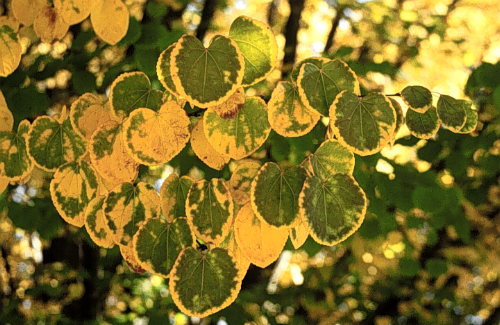Cercidiphyllum japonicum
Katsuratree
Cercidiphyllaceae
ExpandHabitat
- large forest tree of Japan and China
- hardy to zone 4
Habit and Form
- large deciduous tree
- 40-60 ft. tall
- 20-30 ft. wide
- some trees pyramidal, others wide spreading
- dense crown
- coarse winter texture
Summer Foliage
- simple opposite leaves
- broad ovate rounded leaves
- cordate leaf base
- crenate margins
- leaves resemble redbud (Cercis)
- leaves emerge purple, mature to bluish green
Autumn Foliage
- outstanding display
- yellow to apricot fall color
- colors early in season
- autumn leaves give off spicy, brown sugar odor
Flowers
- open before leaves in March-April
- green and not showy
- dioecious
Fruit
- small pods borne 2-4 on stalk
- pods release thin winged seeds
Bark
- brown
- shaggy and peeling on old trunks
Culture
- not easy to transplant
- rich moist well-drained soil
- pH adaptable
- water during dry periods
Landscape Use
- specimen for parks, large lawns and golf courses
- can be used as a street tree
Liabilities
- require water during establishment, dry periods
- size limits use to large spaces
- not easy to transplant
ID Features
- opposite, rounded leaves like redbud
- small pods with winged seeds
- sweet smell as leaves color in fall
- small reddish opposite buds, appressed
- brown shaggy pealing bark
Propagation
- by cuttings
- by seed
Cultivars/Varieties
'Aureum' - The leaves mature to yellow after emerging purplish/green.
'Heronswood Globe' - An unusual dwarf form with a tight, globular habit to 15' tall. Good for smaller gardens.
'Pendula' - A weeping form, with graceful pendulous branches. The plant reaches 15' to 25' tall. 'Tidal Wave' and 'Amazing Grace' are other weepings forms, some with a more strongly weeping habit.
'Ruby' - A more dwarf form, only reaching perhaps 30' tall, with leaves suffused with a bluish-purple hue.
